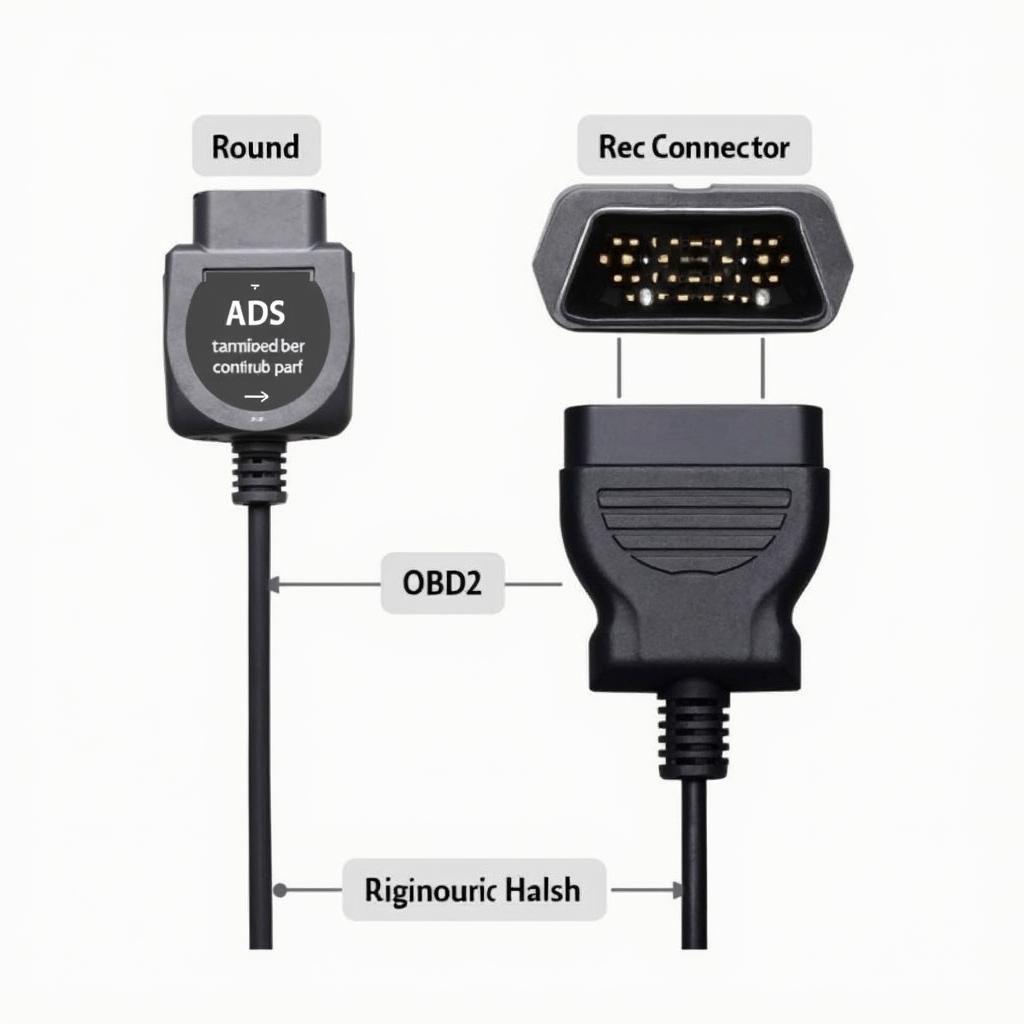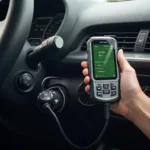Switching from an ADS interface to an OBD2 setup for INPA Ediabas is a common desire for BMW enthusiasts seeking a more modern and versatile diagnostic solution. This guide will walk you through the process, clarifying the benefits, challenges, and crucial steps involved in transitioning from ADS to OBD2 for INPA Ediabas diagnostics.
Understanding the differences between ADS and OBD2 is the first step. ADS, or Advanced Diagnostic System, is an older interface primarily used for older BMW models. OBD2, or On-Board Diagnostics II, is a standardized system found in most modern vehicles. Converting to OBD2 opens up a world of compatibility with a wider range of software and diagnostic tools, making it a worthwhile upgrade.
Why Switch to OBD2 for INPA Ediabas?
The primary motivations for changing from ADS to OBD2 for INPA Ediabas are increased compatibility, easier availability of cables, and access to more advanced features. OBD2 is the industry standard, and switching to it allows for more flexibility in diagnostic tools and future upgrades.
 INPA Ediabas ADS to OBD2 Conversion
INPA Ediabas ADS to OBD2 Conversion
Advantages of OBD2 over ADS
- Wider Compatibility: OBD2 is the standard across most vehicles, allowing you to use your diagnostic tools on various makes and models. This is a significant advantage for workshops or individuals working with a diverse fleet of vehicles.
- Cable Availability: OBD2 cables are significantly easier to find and purchase than ADS cables, especially for newer BMWs. This makes replacement and upgrades simpler and more cost-effective.
- Enhanced Features: Modern OBD2 interfaces often support faster communication speeds and access to more advanced diagnostic features, giving you a more comprehensive view of your vehicle’s health.
Challenges of Switching to OBD2
- Interface Compatibility: Some older BMW models may not be fully compatible with OBD2, requiring additional adapters or software modifications. Researching your specific model is essential before attempting the switch.
- Software Configuration: Changing from ADS to OBD2 in INPA Ediabas requires specific configuration changes within the software. This can be challenging for those unfamiliar with the software’s settings and requires careful attention to detail.
Making the Switch: A Step-by-Step Guide
Before diving into the technical details, it’s important to ensure you have the necessary hardware and software. This includes a compatible OBD2 cable for your BMW, a functioning INPA Ediabas installation, and any necessary drivers for your OBD2 interface.
- Obtain the Correct Cable: Selecting the right cable obd2 usb bmw is crucial. Ensure it supports your BMW model and is compatible with INPA Ediabas.
- Install Drivers: Install the necessary drivers for your OBD2 interface. These drivers allow your computer to communicate with the OBD2 cable and the vehicle’s systems.
- Configure INPA Ediabas: This is the most crucial step. Within INPA Ediabas, you need to modify the configuration files to recognize your OBD2 interface. This usually involves changing the COM port settings and updating the EDIABAS.INI file.
- Test the Connection: Once configured, test the connection by attempting to connect to your vehicle using INPA Ediabas. If the connection is successful, you’ve successfully switched from ADS to OBD2.
“Ensuring the correct cable selection and meticulous software configuration are paramount for a successful transition to OBD2,” says John Miller, Senior Automotive Diagnostic Technician at Bavarian Autohaus. “Taking the time to verify these aspects will save you from potential headaches down the line.”
Troubleshooting Common Issues
Sometimes, even with careful preparation, issues can arise. Here are some common problems and their solutions:
- Connection Errors: Verify cable connections, drivers, and COM port settings in INPA Ediabas.
- Interface Not Recognized: Double-check driver installation and compatibility with your operating system.
- Slow Communication: Try a different USB port or a higher-quality OBD2 cable.
“A thorough understanding of your BMW’s specific requirements is key to a smooth transition,” adds Maria Sanchez, Lead Diagnostic Engineer at EuroCar Diagnostics. “Always consult reliable resources and forums for model-specific instructions.”
Conclusion
Changing INPA Ediabas from ADS to OBD2 provides numerous benefits, including enhanced compatibility and access to a wider array of diagnostic tools. By following the steps outlined in this guide, you can successfully make the switch and enjoy the advantages of a modern OBD2 setup for your BMW diagnostics. Remember to carefully research your specific model’s requirements and double-check your configuration settings before connecting to your vehicle.
FAQ
- What is INPA Ediabas?
- What’s the difference between ADS and OBD2?
- Why should I switch to OBD2?
- What cable do I need for OBD2 diagnostics on my BMW?
- Where can I find the necessary software and drivers?
Common Scenarios and Questions
- Scenario: My INPA still won’t connect after changing the settings.
- Question: Could there be a problem with my cable?
Further Resources
For additional information and support, check out our article on how to change inpa from ads to obd2.
Contact us for support via WhatsApp: +1(641)206-8880, Email: [email protected] or visit us at 789 Elm Street, San Francisco, CA 94102, USA. We have a 24/7 customer service team ready to assist.

